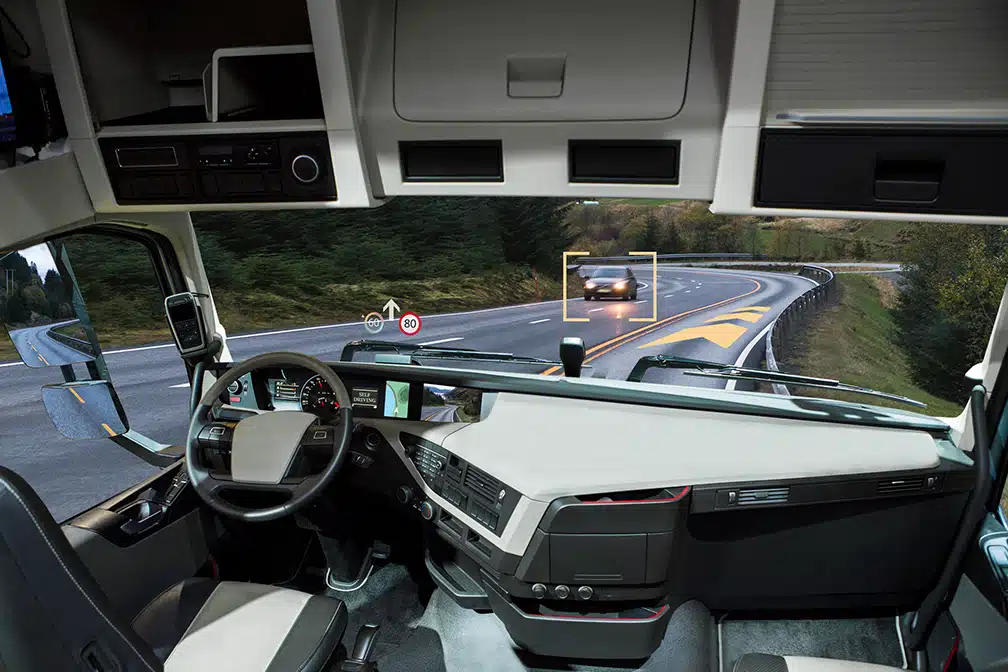The trucking industry has faced a significant challenge in recent years as operating costs have surged, threatening the viability of many large and small carriers. The American
More
May 19, 2024 8:40 pm

Automated trucks, also referred to as self-driving trucks have been attracting attention in the transportation industry lately. These driverless vehicles are poised to revolutionize the trucking sector by enhancing safety, efficiency, and cost-effectiveness as they continue to evolve.
Equipped with an array of sensors, cameras, and advanced technologies autonomous trucks can navigate roads. Avoid obstacles independently. The technology that drives these trucks is continuously progressing to offer levels of automation.
At Level 1 automation features such, as lane departure warnings and adaptive cruise control assist drivers. Moving up to Level 2 automation allows the truck to handle steering and acceleration functions. Level 3 automation grants the vehicle control over driving tasks in situations like highway driving. On the other hand Level 4 automation permits operation under conditions with Level 5 autonomy ensuring full independence across all scenarios.
The development of truck technology is primarily driven by factors like addressing driver shortages in the industry. Allowing trucks to function without a driver on board assists companies in managing driver deficits and cutting labor expenses.
Safety concerns also play a role in propelling advancements in truck technology. In 2018 truck accidents resulted in the loss of 4,951 lives according to data from the National Highway Traffic Safety Administration (NHTSA). Automated trucks hold promise in reducing accidents caused by issues such, as driver fatigue and impaired driving.
In addition, to improving safety and reducing labor expenses self-driving trucks offer advantages in increasing efficiency. Cutting down on fuel usage. These vehicles can be programmed to travel at speeds and optimize fuel consumption ultimately lowering costs for trucking companies.
Key players in the industry such as Tesla, Waymo, and TuSimple are at the forefront of truck innovation. Tesla’s Semi truck utilizes Autopilot technology for its driving capabilities. Waymo is focusing on developing a Level 4 truck designed for delivery and logistics tasks while TuSimple is dedicated to creating Level 4 trucks for long-distance freight services.
Although the future looks promising for automated trucks some obstacles need to be addressed before widespread adoption can take place. One major challenge is gaining approval from organizations like the NHTSA, which has yet to establish regulations for truck operations while also tackling safety and liability concerns.
Another hurdle involves establishing the infrastructure for these trucks to operate efficiently. They rely on a network of sensors, cameras, and other technologies to function safely and effectively. Furthermore expanding infrastructure by installing charging stations and fueling stations for fuels, like hydrogen is crucial to support truck operations.
Moreover, certain factors require consideration. Many individuals still have reservations regarding the safety and reliability of trucks leading to some hesitance in embracing this technology.
Nevertheless despite facing these challenges the progress, in truck technology holds promising opportunities for the industry and future transportation systems. Autonomous trucks, focusing on safety, efficiency, and cost-effectiveness have the potential to transform the logistics of moving and distributing goods. As advancements continue we expect to see an increase in the presence of trucks, on our roads in the years
The trucking industry has faced a significant challenge in recent years as operating costs have surged, threatening the viability of many large and small carriers. The American
MoreAs we approach National Truck Driver Appreciation Week, it is imperative to delve into the pivotal role these drivers play and understand why honoring their efforts is
MoreIn the world of trucking and freight transportation, the economic landscape has been characterized by a mix of challenges and potential opportunities. Recent data reveals a nuanced
MoreCovenant, one of the leading transportation and logistics companies in the United States, has recently announced the opening of a
MoreTruckers Continue to Face Surging Diesel Prices: How to Navigate, Cut Costs, and Thrive in this Challenging Landscape in Order
MorePaccar has initiated a significant recall involving 116,343 trucks. This recall impacts a range of models from two of its
MoreCargo theft has become a significant concern within the transportation industry, with an alarming increase in incidents reported in recent
MoreStates challenge new emission rule affecting trucking; this lawsuit involving more than twenty US States questions federal authority.
More